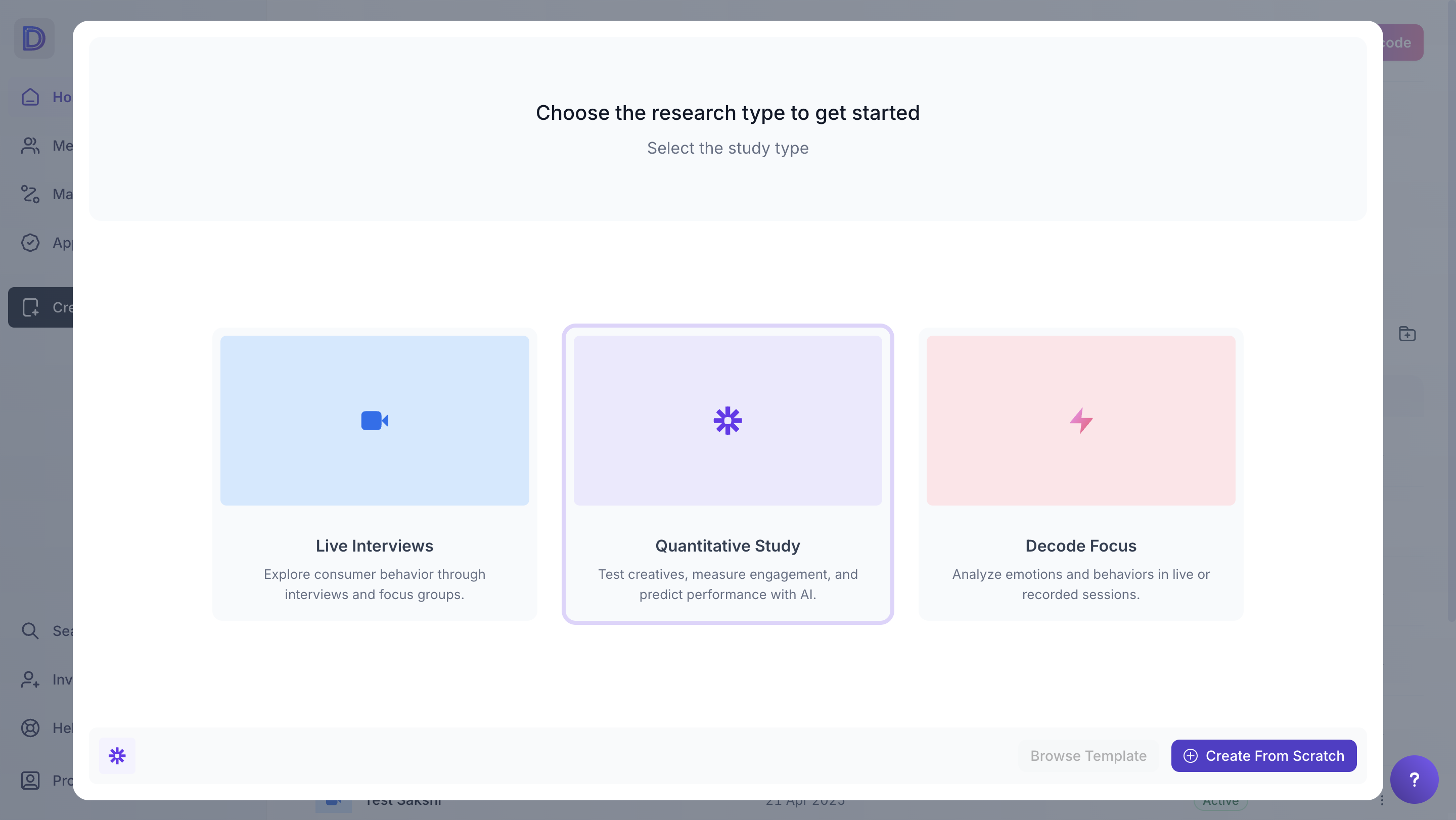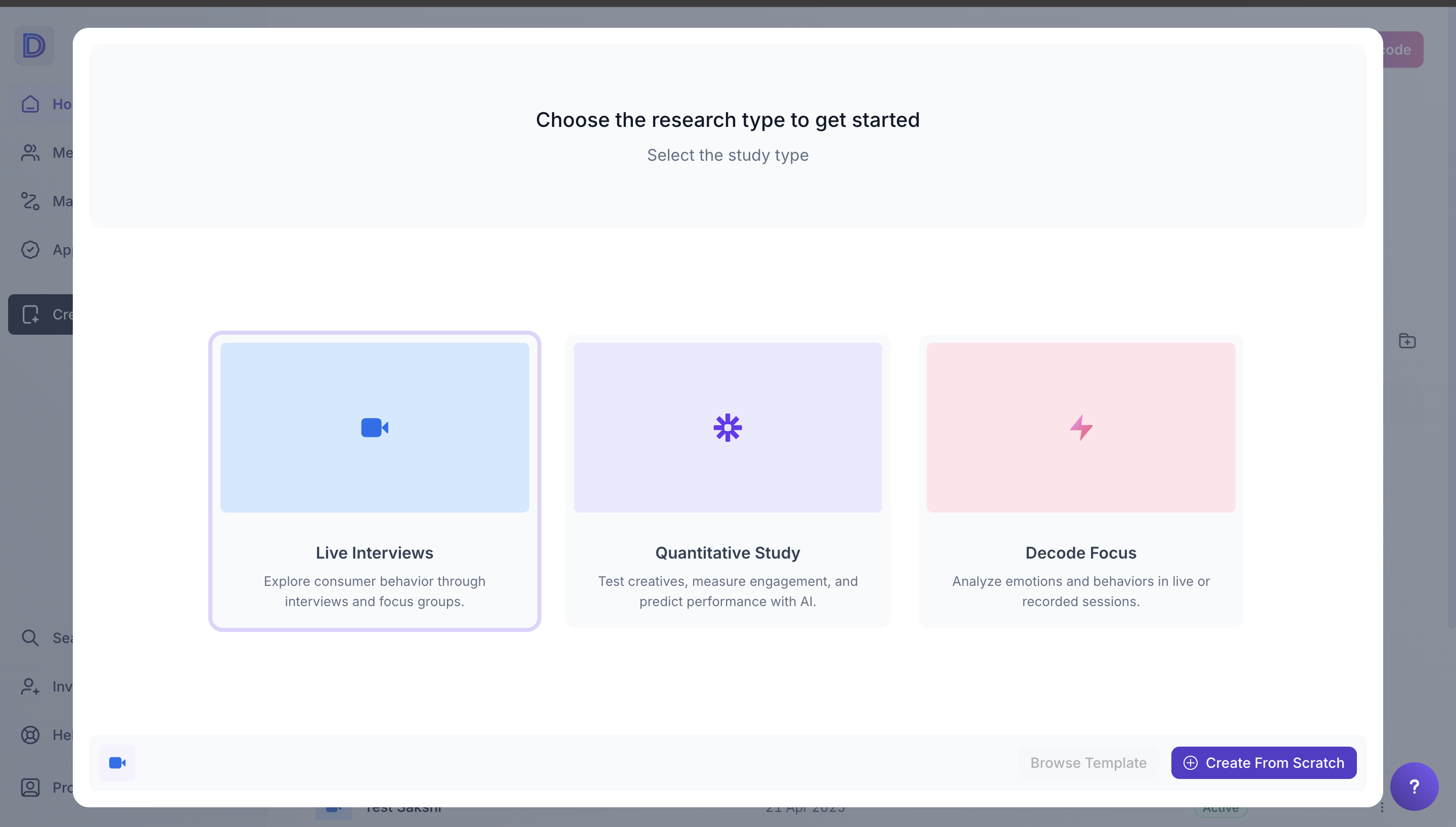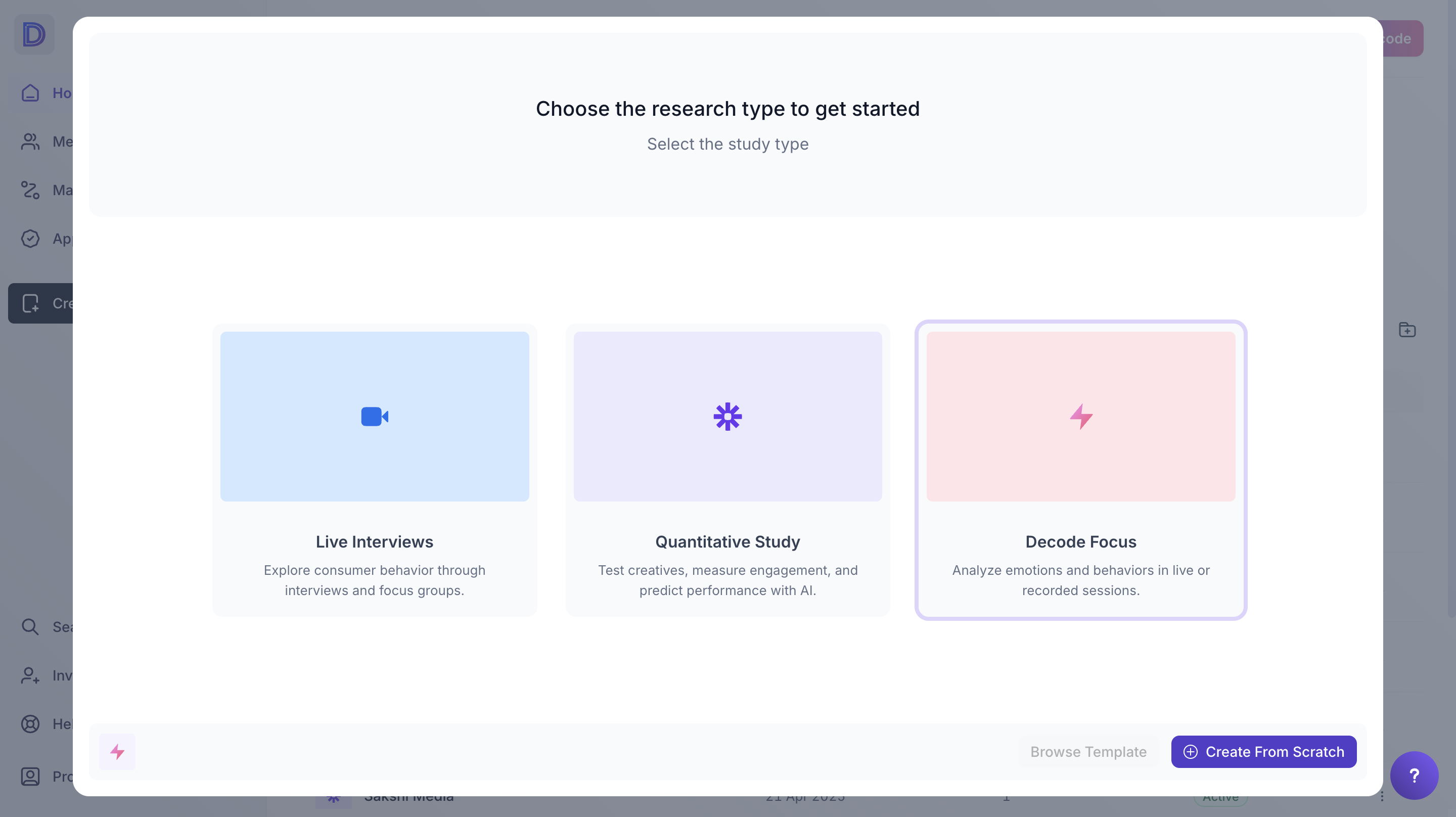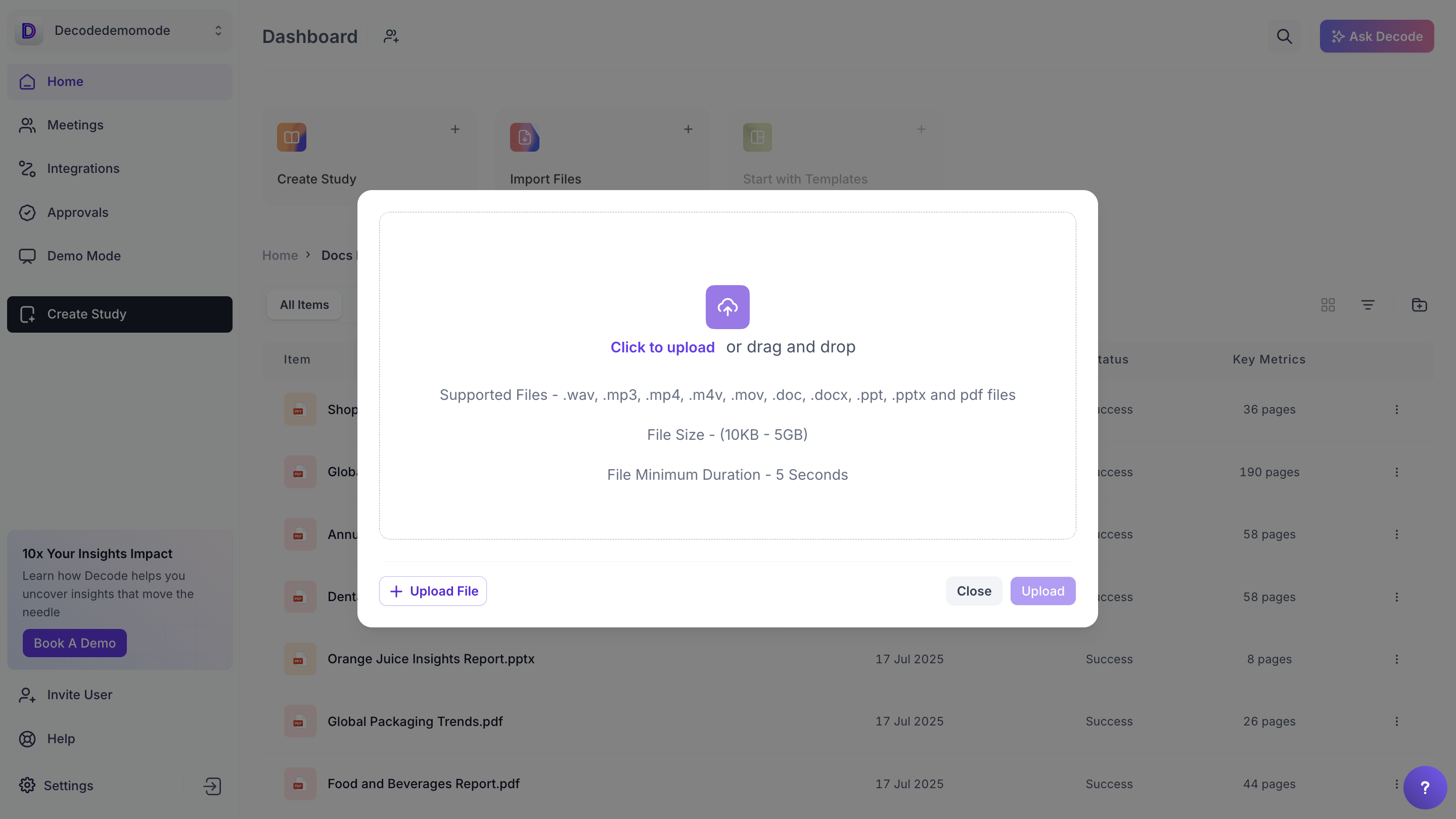Getting Started with Decode

What is Decode?
Decode is an AI-integrated, one-stop solution for all your research needs. It helps you:
- Conduct user research to understand how people think, feel and act.
- Gather consumer insights to uncover preferences, motivations and behaviours.
- Test and refine content with AI creative insights, even before involving real participants.
- Store and organize all your materials in the Insights Hub for easy access and long-term value.
With Decode, you can move from data → insights → decisions seamlessly, all in one platform.
Decode as a Consumer Insights Hub
Decode brings together four key pillars:
- User Research (General, Advanced, Task, Qualitative)
- Consumer Insights (General, Advanced, Media Testing, In-Context, Qualitative)
- AI Creative Insights (Focus)
- Insights Hub
Tracking User Interactions
In Decode, all user interactions can be analyzed using technologies such as facial coding, eye movement tracking and mouse tracking. These insights help measure attention, engagement and emotional responses, providing a deeper understanding of how users experience your content.
1. User Research
User Research in Decode captures how people think, feel and behave when interacting with your product, content or experience.
Quantitative Research Methods
- General Research: Gather structured feedback through surveys and simple questionnaires to understand opinions, behaviours and expectations.
- Advanced Research: Explore deeper insights by testing prototypes, comparing options and evaluating usability or user preferences.
- Task Research: Test interactions on live websites or apps to see how users perform real tasks and identify areas for improvement.

Qualitative Research Methods
- In-Depth Interviews: Understand participants thoughts, feelings and motivations through direct conversations. These interviews help reveal insights into decision-making, preferences and experiences.
- Group Discussions: Capture rich insights through collaborative discussions with multiple participants. This helps identify common patterns, preferences and perspectives within a group setting.

2. Consumer Insights
Consumer Insights help uncover what drives people’s decisions and preferences.
Quantitative Research Methods
- General Research: Gather consumer feedback through surveys to understand attitudes, sentiment and overall preferences.
- Advanced Research: Go beyond general surveys to gain deeper insights into consumer preferences and satisfaction. This includes conjoint studies to evaluate how consumers value different product features and the NPS and Matrix to measure loyalty and overall satisfaction. These insights help identify which options are most appealing and inform decisions around product design, marketing and customer experience.
- Media Testing: Evaluate how consumers respond to videos or images. Decode captures emotional and behavioural reactions through scores and visual analytics, helping refine content for maximum engagement.
- In-Context Testing: Test your content in realistic settings such as Instagram, YouTube, LinkedIn, Douyin, TikTok and Facebook before publishing. Users interact with your content as if they are on the actual platform, helping you understand engagement, attention and reactions. This ensures your posts, videos or ads perform effectively in the environments where your audience actually views them.

Qualitative Research Methods
- In-Depth Interviews: Understand participants thoughts, feelings and motivations through direct conversations. These interviews help reveal insights into decision-making, preferences and experiences.
- Group Discussions: Capture rich insights through collaborative discussions with multiple participants. This helps identify common patterns, preferences and perspectives within a group setting.

3. AI Creative Insights
AI Creative Insights (Decode Focus) allows you to evaluate creatives without involving live respondents.
- Fast & Cost-Effective: Test ideas quickly before investing in large-scale studies.
- Smart Pre-Testing: Shortlist the most promising creative options early.
- Actionable Metrics: Predictive insights like attention, focus, clarity, plus heat maps and transparency maps showing the audience attention within your content.
This makes AI Creative Insights the perfect first step in your creative testing pipeline.

4. Insights Hub
The Insights Hub is your central repository for research materials and findings.
- Store all study-related documents in one place (PDFs, Word files, PPTs, reports, etc.).
- Maintain a single source of truth for your research, making it easy to share and collaborate across teams.
- Link documents to research projects to build context-rich insights.
- Revisit past studies and build on previous learnings moving from scattered files to structured knowledge.
The Insights Hub keeps all your research connected in a single, organized space, helping you turn insights into impactful decisions.

